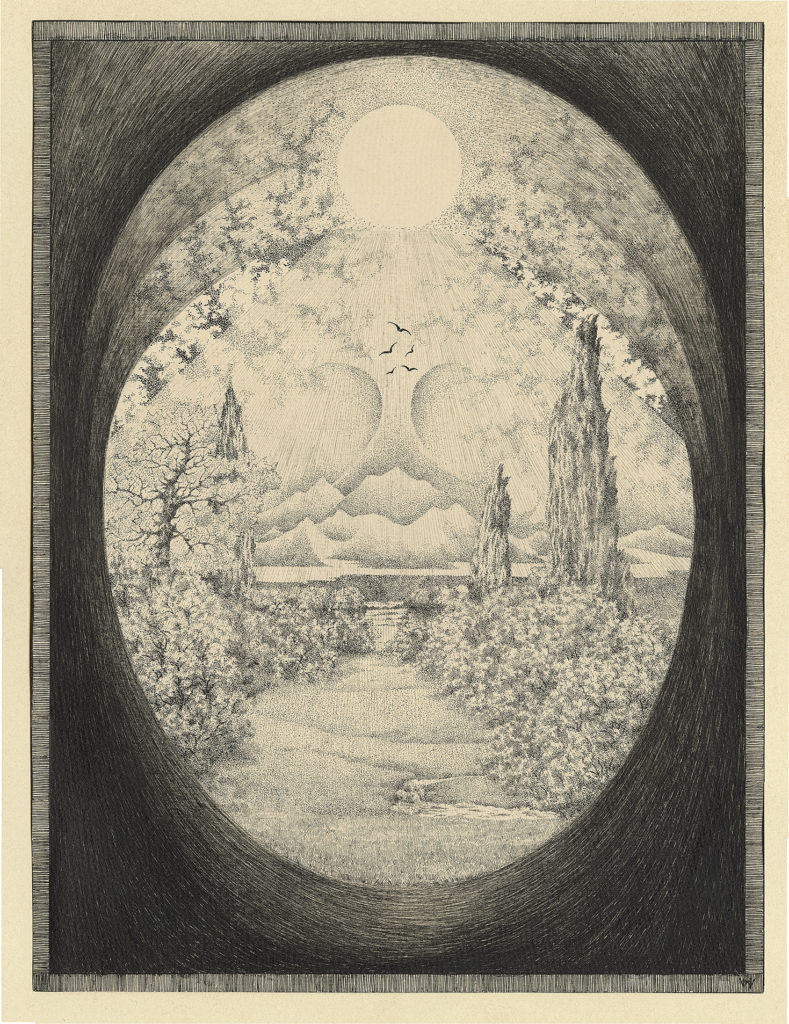Hermann Wöhler is one of the greatest rediscoveries from amongst the German artists of the 1920’s. The artist started studying in his native city of Hanover, then at the Kunstgewerbeakademie in Dresden and Staatlichen Kunsthochschule in Berlin, where in 1923 he was appointed Akademischer Zeichenlehrer, or drawing teacher. An intellectual man, Wöhler was well versed in German art, history, philosophy and classical literature, as well as in Oriental and Eastern religions, Gnosticism and the Kabbalah. From the start of his career, Wöhler adopted subjects from German mythology and literature, transforming them into striking works, characterized by imaginative compositions and bizarre imagery.
Major influences are the key protagonists of the sixteenth century Danube School, such as Albrecht Altdorfer and Wolf Huber, together with nineteenth century artists such as Philipp Otto Runge and his ornamental symbolism, and Hugo Hoeppener, known as Fidus, whose work combined mysticism, eroticism and allegory, and who had been Wöhler’s teacher. The present work displays genuine originality, however. Instead of presenting this paradise landscape as the original-but-lost state of the world, Wöhler invites an unexpected and magnificent first discovery, at the end of a shadowy tunnel, of a gentle path leading to the eternal light. It recalls the The Ascent of Blessed by Jerominus Bosh, at the Museo di Palazzo Grimani in Venice.
Wöhler worked in black and white, producing elaborate large-scale drawings in pen and ink. In 1918, his first work was a portfolio of seven large ink compositions, plus title page, under the title Zwielicht: Sieben Sinnbilder / Erste Geschichte des Erwachenden Schicksals vor dem Licht [Twilight: Seven Symbols / The First History of the Awakening Fate of Light]. He continued to create series of sizeable ink drawings throughout the 1920s. The so-called series were in fact rarely planned as such from the outset of the process, and most of them have not been kept together, which make it somewhat challenging to divine their meaning.
These fantastic drawings are rare to find. From 1934 until his death in 1961, Wöhler served as Professor of art at the Pädagogischen Kunsthochschule in Hanover. His long career as a teacher largely precluded him from selling or exhibiting his own work, and his oeuvre was entirely unknown to the public during his lifetime. Later in his career, Wöhler turned to producing tempera paintings of fairy tale themes, mostly executed in the 1940’s, in reaction to the horrors of the war. It was not until 1987 that the first exhibition of Wöhler’s work was mounted, at the Historischen Museum in Hanover. In January 2015, the Deutsches Märchen und Wesersagenmuseum held an exhibition of sixty paintings, to commemorate the museum’s acquisition from Wöhler’s heirs of over two hundred works.






